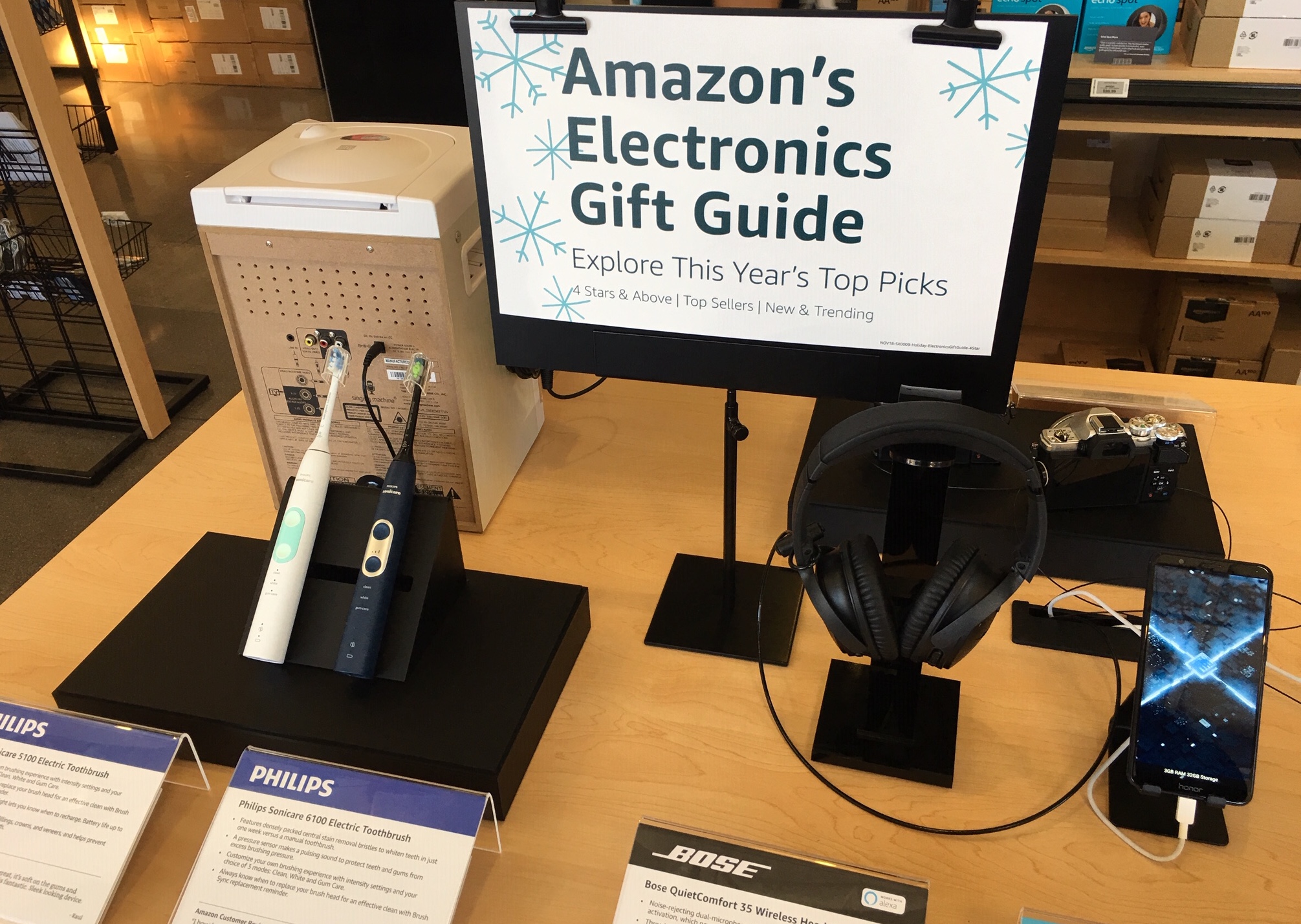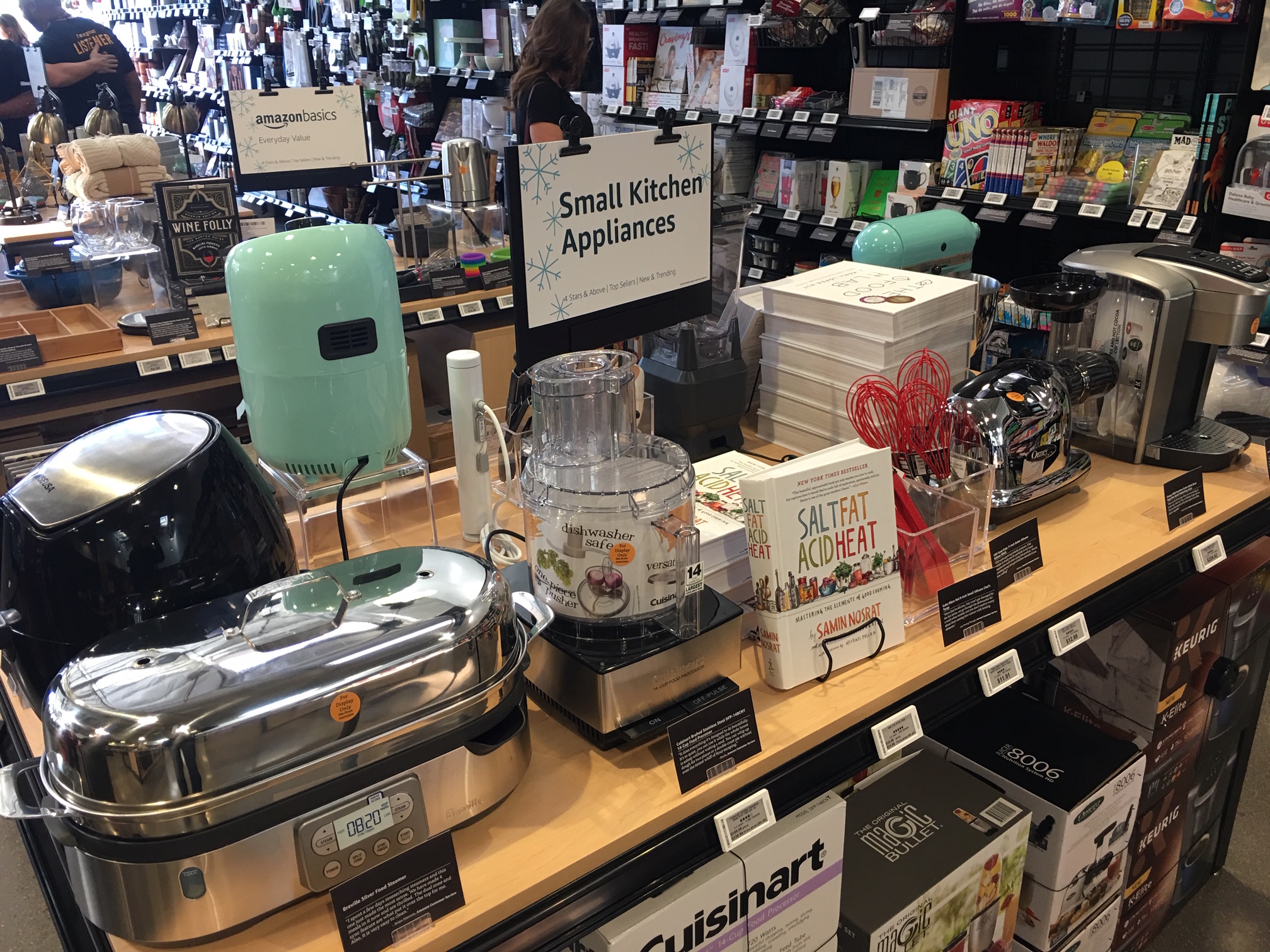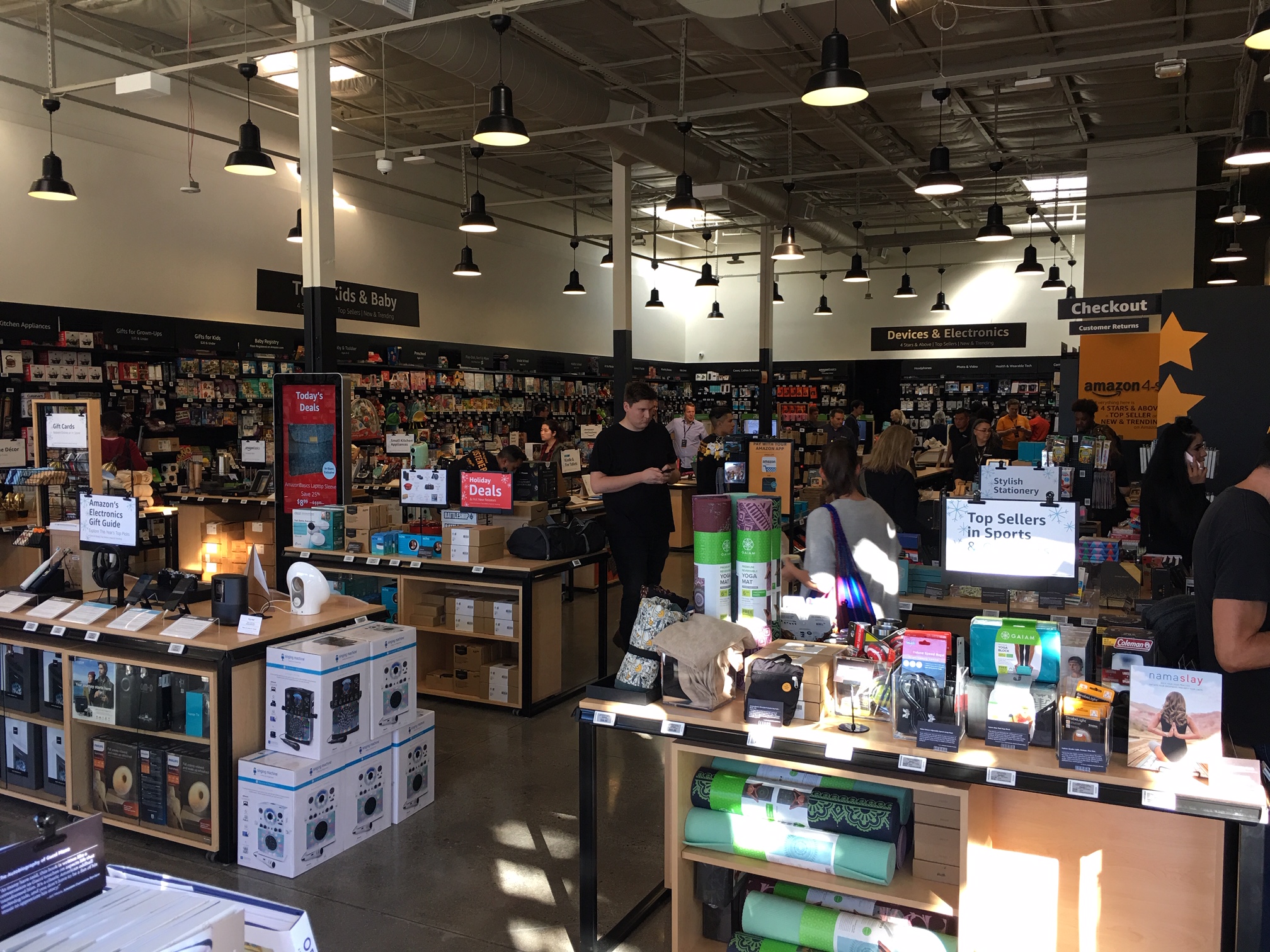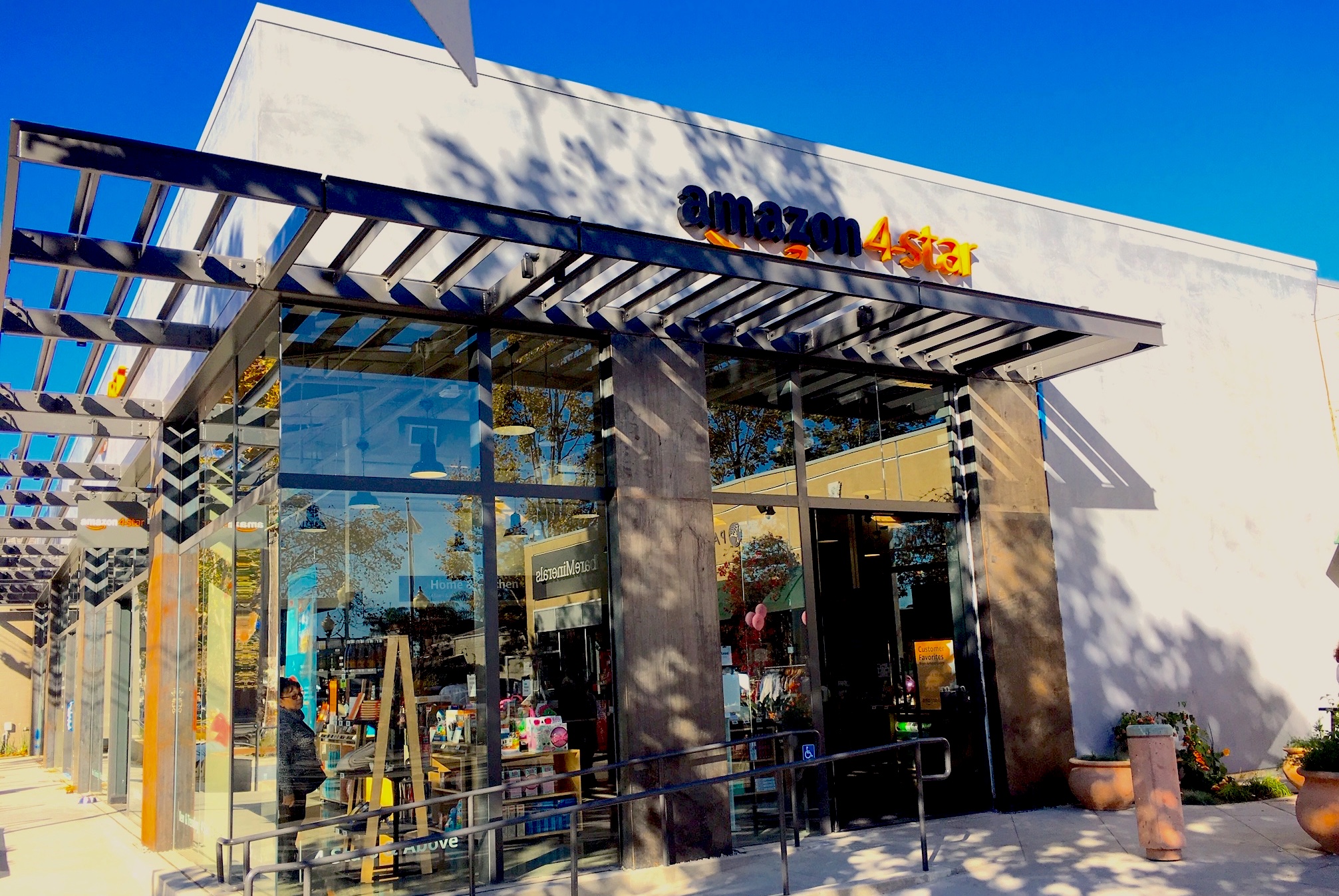Amazon 4-Star Store: Can You Have a Customer-Rated Brand Experience?
[et_pb_section fb_built=”1″ _builder_version=”3.0.47″ custom_padding=”1px|0px|54px|0px|false|false”][et_pb_row custom_padding=”26px|0px|6px|0px|false|false” _builder_version=”3.17.2″][et_pb_column type=”4_4″ _builder_version=”3.0.47″ parallax=”off” parallax_method=”on”][et_pb_text _builder_version=”3.17.2″]
I visited this small store on Fourth Street in Berkeley. It immediately struck me it doesn’t really provide much of a selection. But it’s not really about the depth of selection; it’s about value validated by consumers like you.

The Real Feature is the 4-Star Plus Ratings — It’s What Other Customers Value as Top Picks – not Amazon
In most cases, when you’re shopping in-stores, you already have some idea of what you want. At the Amazon store, you might have to approach your shopping habits in a different way. This store doesn’t have a large selection of everything you might be looking for, it only features a small number of products over a wide range of categories. In doing this, the Amazon store combines two things that make it unique: all the products are highly rated by Amazon customers and it brings something to Amazon that did not exist before —personal interactions with the Amazon brand through real customer service people in the “real world”.

Connecting with Customers – In Person: It Does Make a Difference
Online shopping isn’t about connecting with the retailer in a personal one-on-one way. The online experience is generally impersonal and literally about finding what you need and the best deals on that item. There is no one involved in the purchase and shipping of products — it’s all transactional.
But when you come into the Amazon store environment, you’re really having a connection to Amazon and their staff (you actually have to check out with a person like any other store). This personalizes a customer’s experience, which adds to a customer’s brand experience and a reason to come back.

The Initial Store Experience Immediately Strikes You As Very Cluttered
Lastly, the Amazon 4-Star experience really is about getting the Amazon brand into the physical world. What online based companies are discovering is that the brick and mortar experience is actually essential in creating a brand experience and connection for customers; otherwise, it’s simply buying something from someplace and you might as well go someplace else next time
Warby Parker, which started as an online optical store, now has close to 100 stores nationally. Best Buy, the home consumer electronics store is thriving with a massive brick and mortar presence of 1,500 stores, but now 25% of all sales are online. They count on you checking out that big screen tv at the store and having a personal interaction with their experts.

Building the Connected Brand Experience
Shopping online or in stores, does it matter? if you don’t experience the brand at a personal level, you don’t connect. If customers are not connecting to your brand, you might sacrifice sales to another competitor or brand awareness. The key here is to provide your customers with a uniquely personal experience that is positive, one that they clearly remember, one that builds loyalty. Keeping the connection and extending into a broader shopping experience is essential to building brand awareness. This is why the “showroom” aspect of a store can be really valuable to a brand in the real world.
However, Amazon doesn’t really need this “showroom” aspect of a store to make money, or do they? They’ve already capitalized on being one of the first online shopping platforms to sell essentially everything you could find in a store and more. For Amazon, this store is about visibility and story: we feature what you as a customer said is great – not Amazon.
The real test here is if this store will make Amazon more engaging for customers in all areas. The Amazon forays into brick and mortar, including Whole Foods and the Amazon GO stores, are all about using customer data to drive inventory, localize sales, curate a better experience and build more knowledge about their customers. And, yes, to sell more stuff. I guess we’ll have to see how it evolves over time and if it really does connect more customers to a positive brand experience.
[/et_pb_text][/et_pb_column][/et_pb_row][/et_pb_section]
